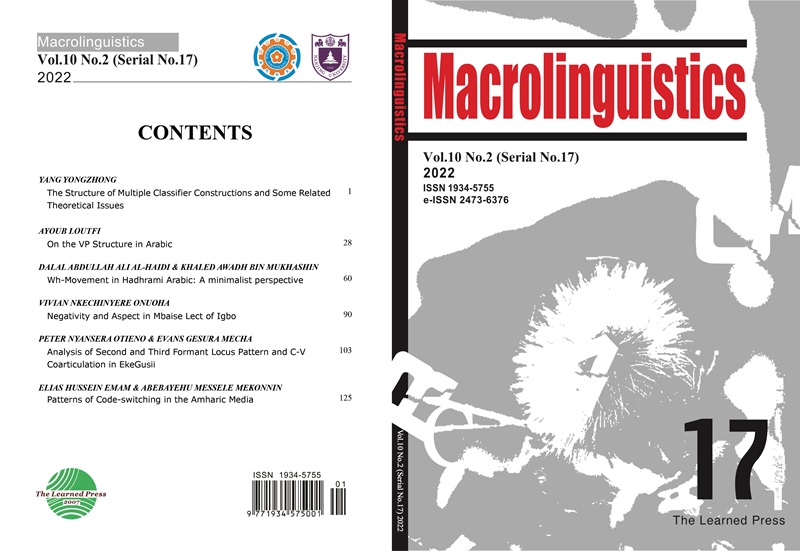普通话拟声词主音平调的三大困惑
引用次数: 0
摘要
汉语拟声词以阴平音为主,其背后有三个困惑:(a)这种音调分布模式是自古以来就存在,还是由历时演变引起的?(b) 如果这种音调分布是由历时演变引起的,那么历时演变的过程是什么?(c) 这种音调分布模式背后的制约机制是什么?本文首先考察了从西周到春秋、唐、元、清中期和当代五个历史时期的音调分布格局、音节大小和结构类型的历时演变。其次,它试图提供一个接一个解开这三个谜题的钥匙。最后,给出了与本课题相关的四个结论。本文章由计算机程序翻译,如有差异,请以英文原文为准。
Three Puzzles of the Dominant Yinping Tone in Mandarin Onomatopoeias
: Yinping tone is dominant in Mandarin onomatopoeias and there are three puzzles behind it: (a) Does this tonal distribution pattern exist since ancient or is it caused by diachronic evolution? (b) If this tonal distribution is caused by diachronic evolution, then what is the process of the diachronic evolution? (c) What is the restrictive mechanism behind this pattern of tonal distribution? First, this article examines the tonal distribution pattern, diachronic evolution of syllable size and structure type from five historical periods: from the Western Zhou Dynasty to the Spring and Autumn Period, the Tang Dynasty, the Yuan Dynasty, the middle Qing Dynasty and the contemporary China. Second, it tries to provide the key that unlocks the three puzzles one by one. Finally, four conclusions related to the subject are presented.
求助全文
通过发布文献求助,成功后即可免费获取论文全文。
去求助
来源期刊
自引率
0.00%
发文量
83
审稿时长
20 weeks
期刊介绍:
Macrolinguistics (ISSN 1934-5755, e-ISSN 2473-6376) is an international academic journal which is specialized in research papers of non-Indo-European linguistics. It is published biannually by The Learned Press and funded by the Double First-Class Initiative of Nanjing University. It aims at contributing to the complementarity and interaction of linguistic research worldwide.

 求助内容:
求助内容: 应助结果提醒方式:
应助结果提醒方式:


